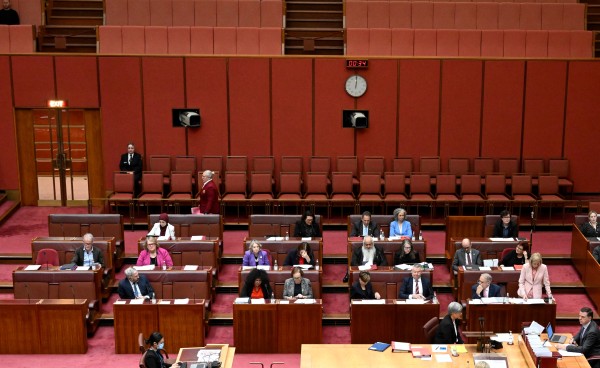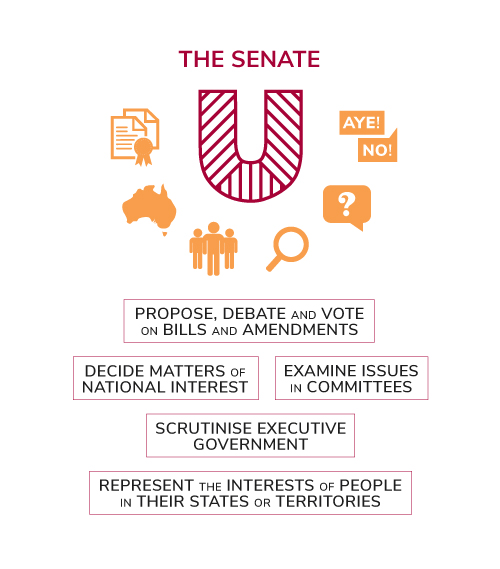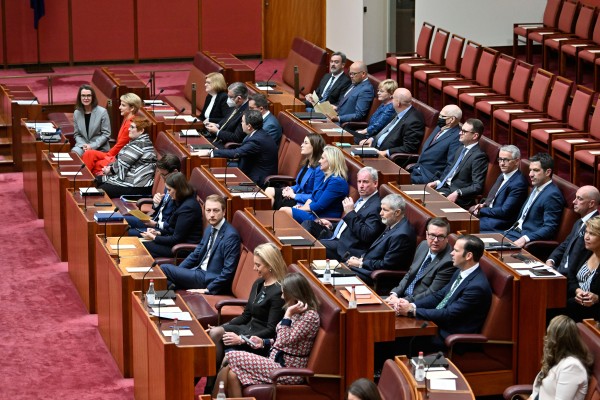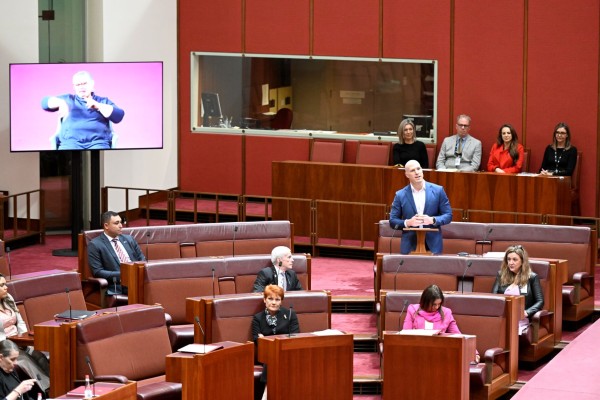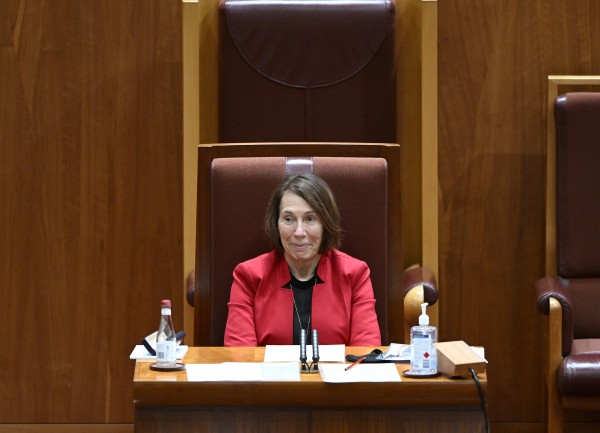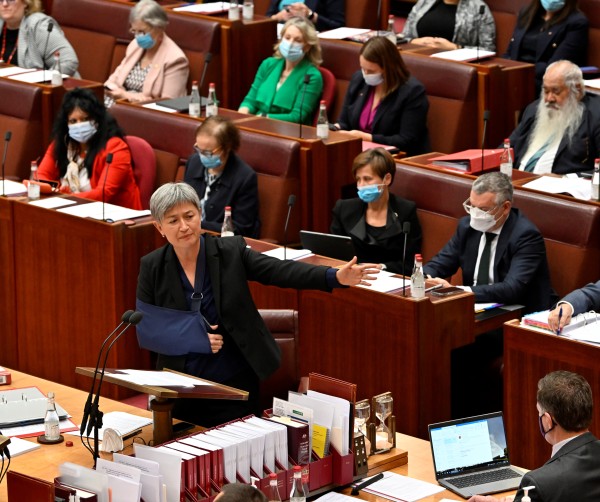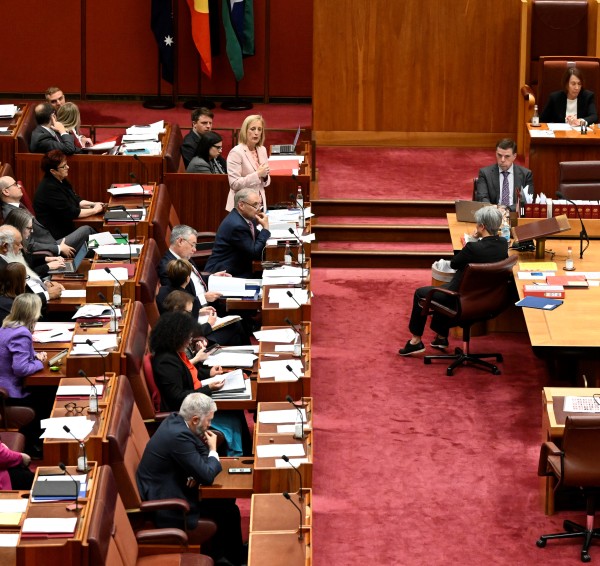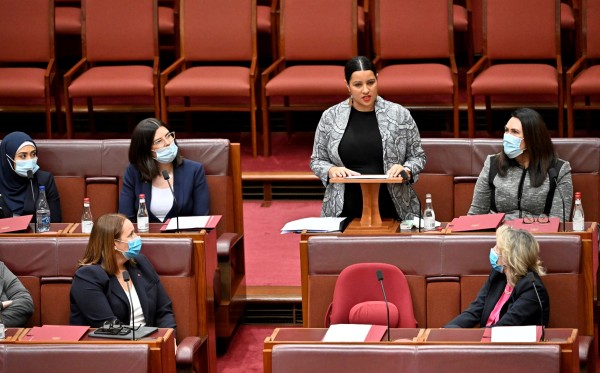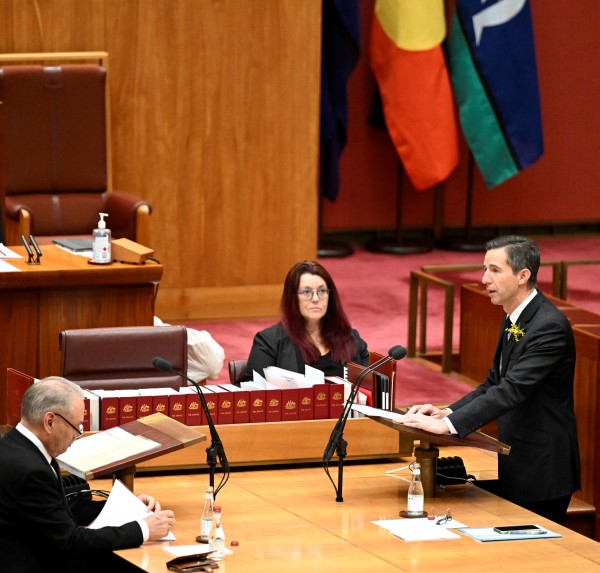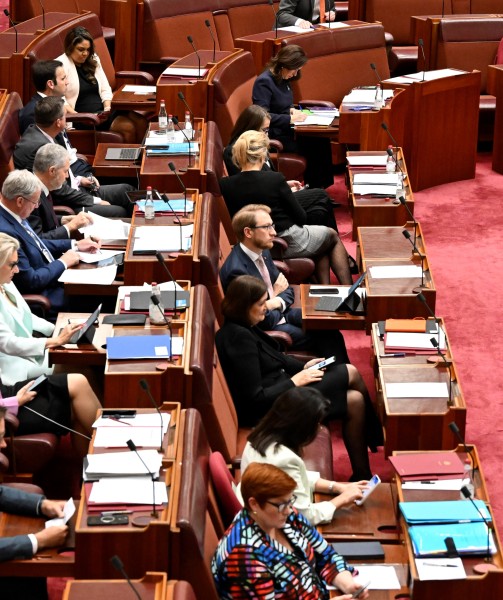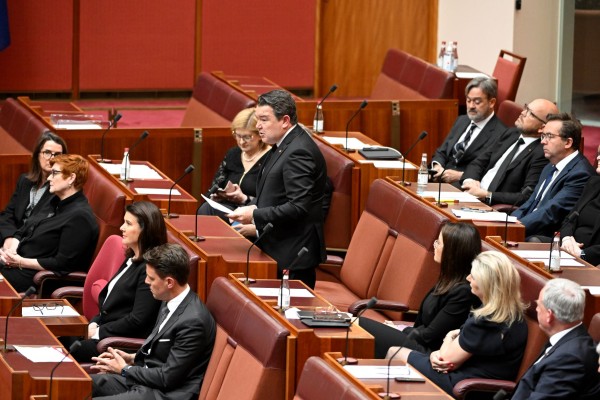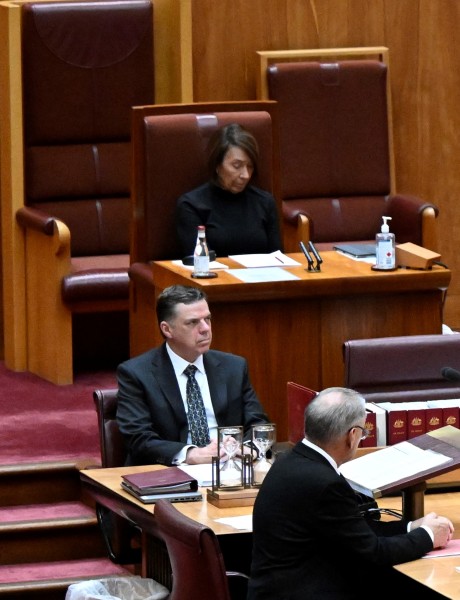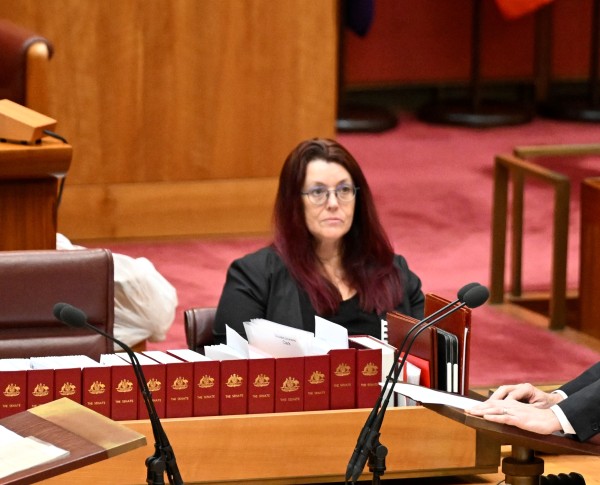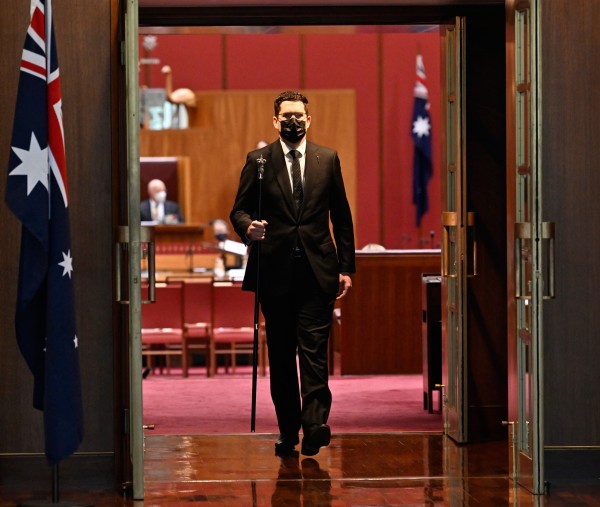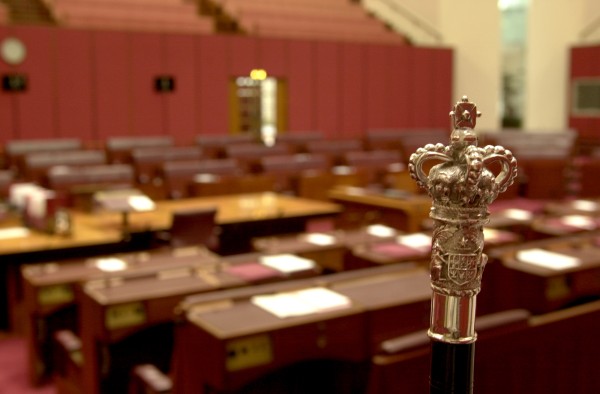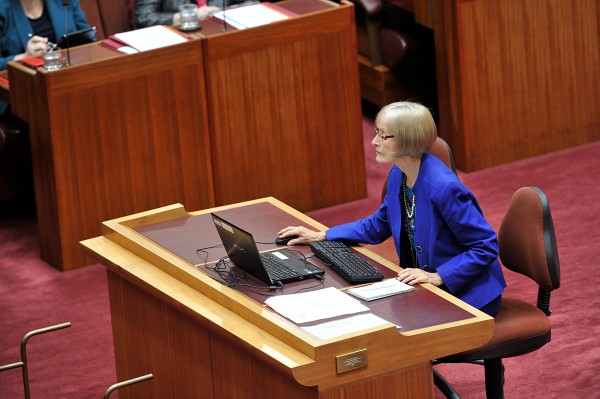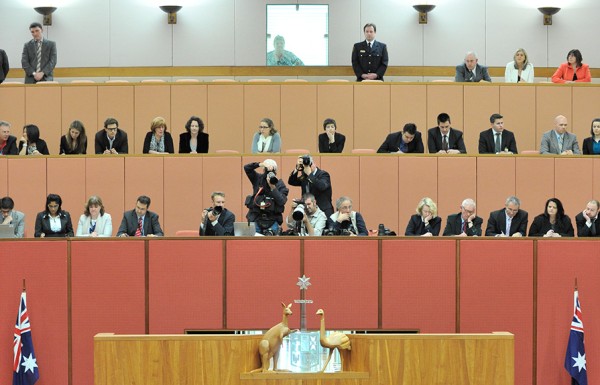I am used by the Governor-General or the Monarch (King or Queen) on special occasions, such as the opening of a new Parliament. When I am being used, I am moved forward, and the President's chair is placed to the right. When I don't have a job to do, I am located directly behind the President's chair.
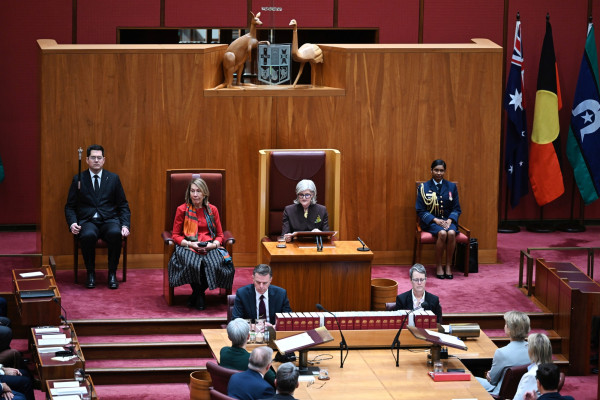
The Governor-General delivers a speech at the opening of a new Parliament
Belinda Hogg/DPS Auspic
The Governor-General gives a speech in the Senate at the opening of a new Parliament. There is a raised platform where the Governor-General sits in a large wooden chair speaking into a microphone. The President of the Senate is sitting in a high backed chair to the right of the Governor-General. Senators, members of the House of Representatives and officials sit nearby watching.

